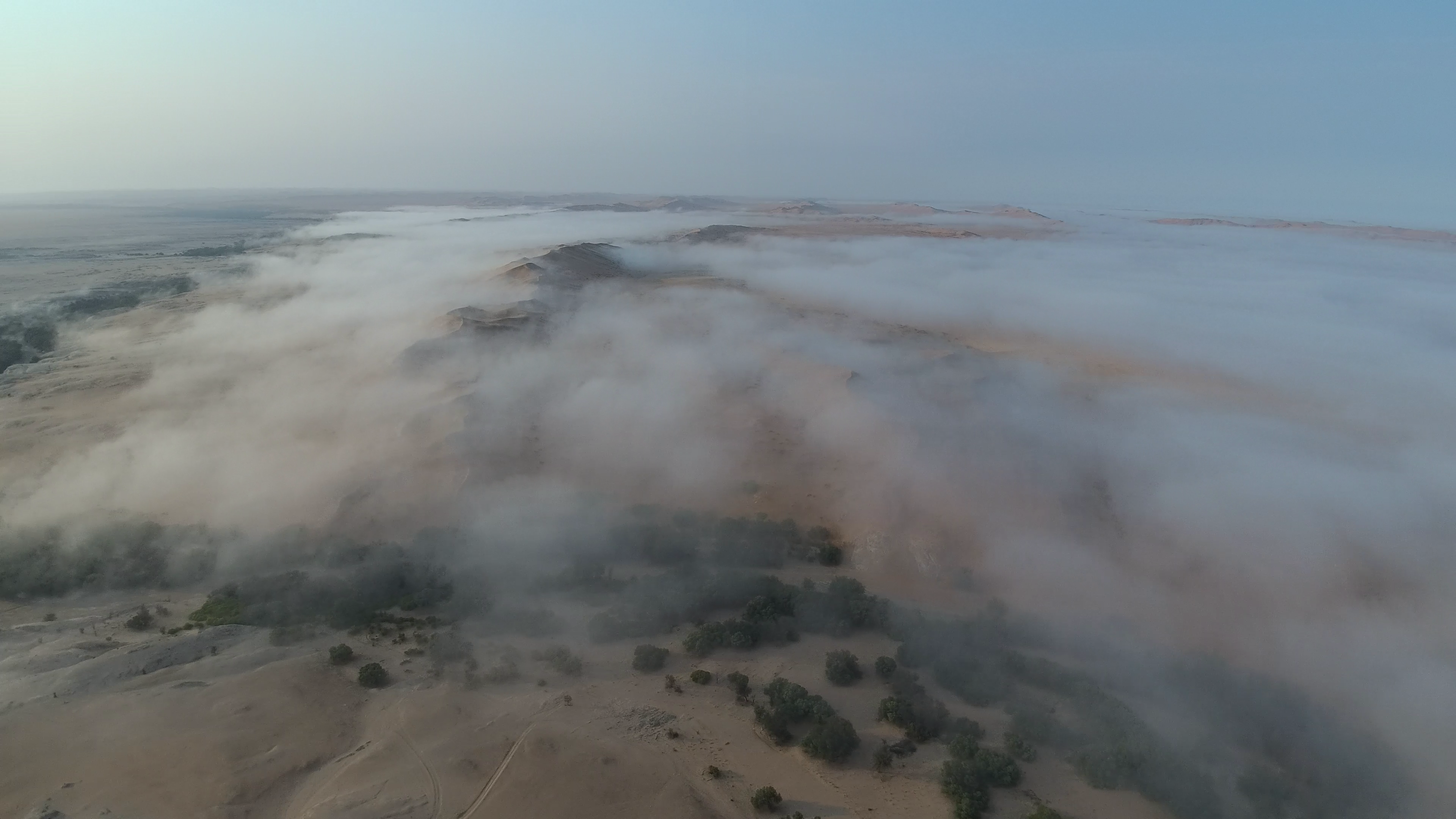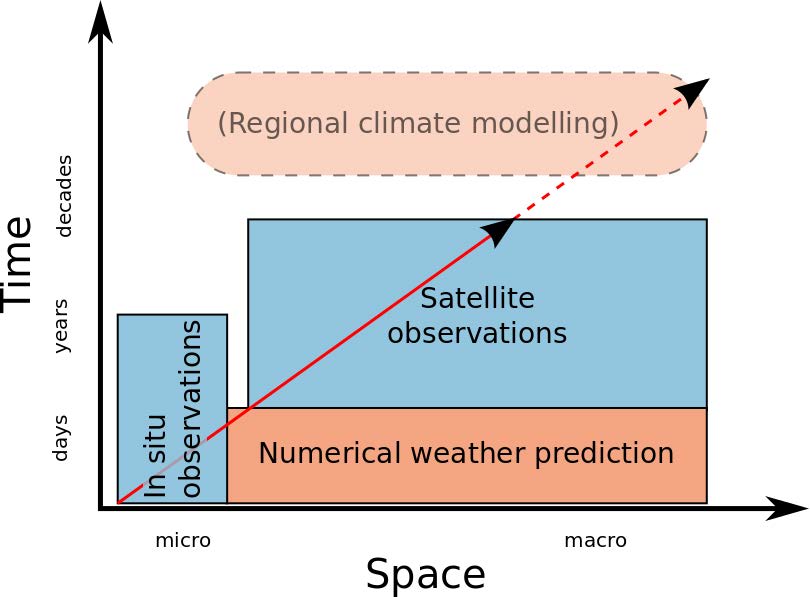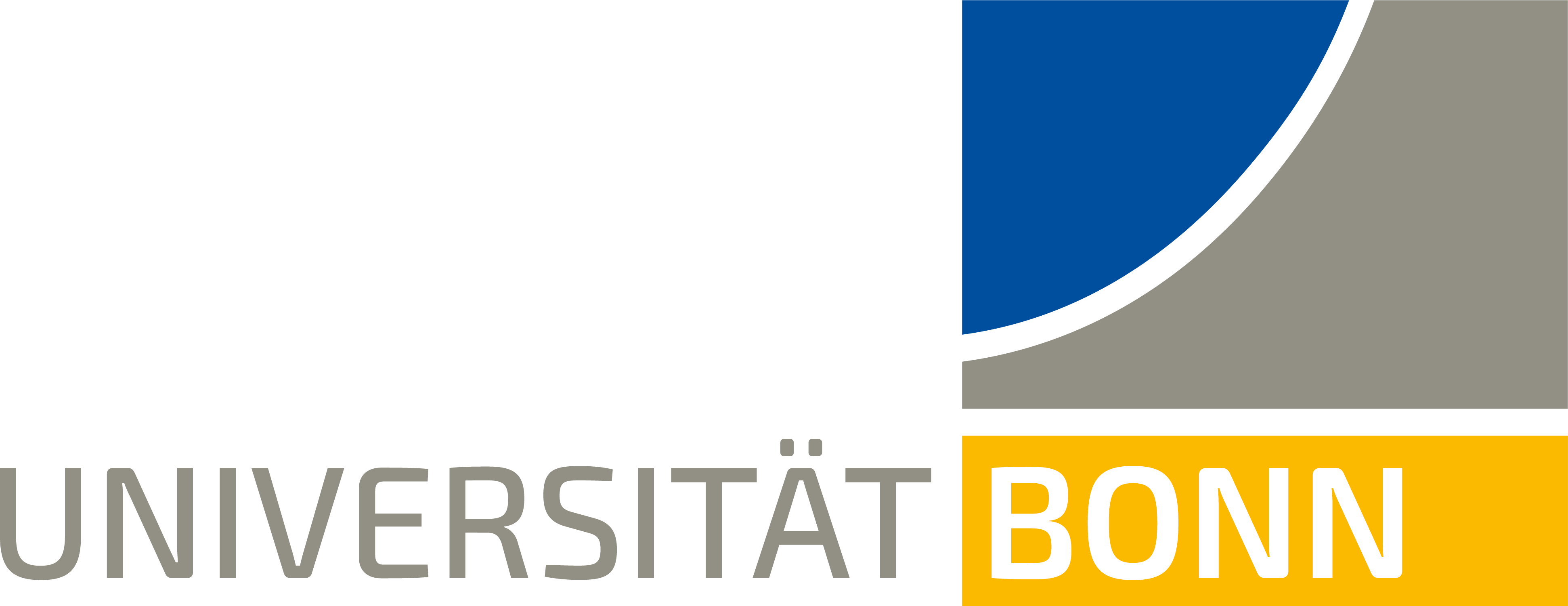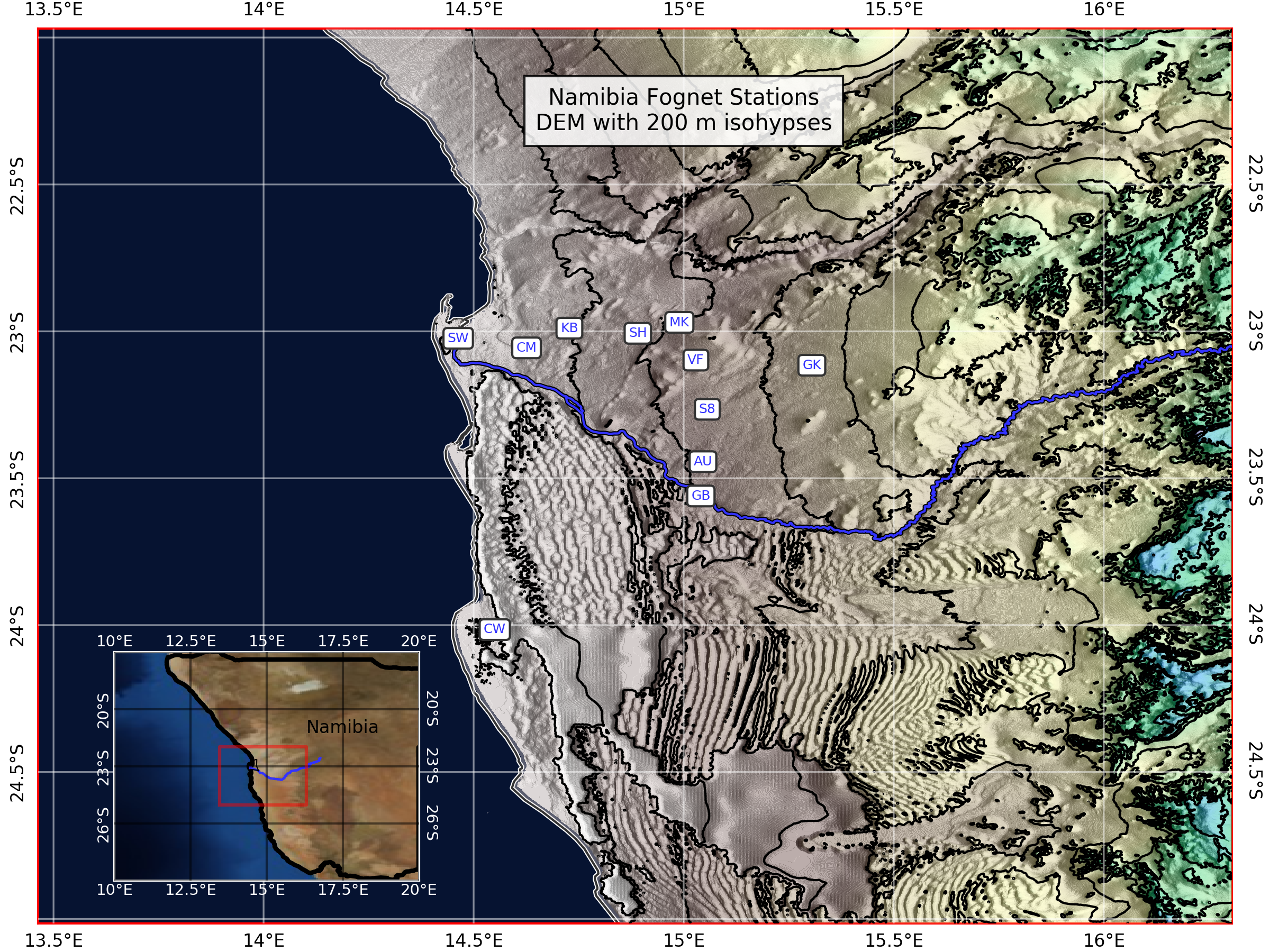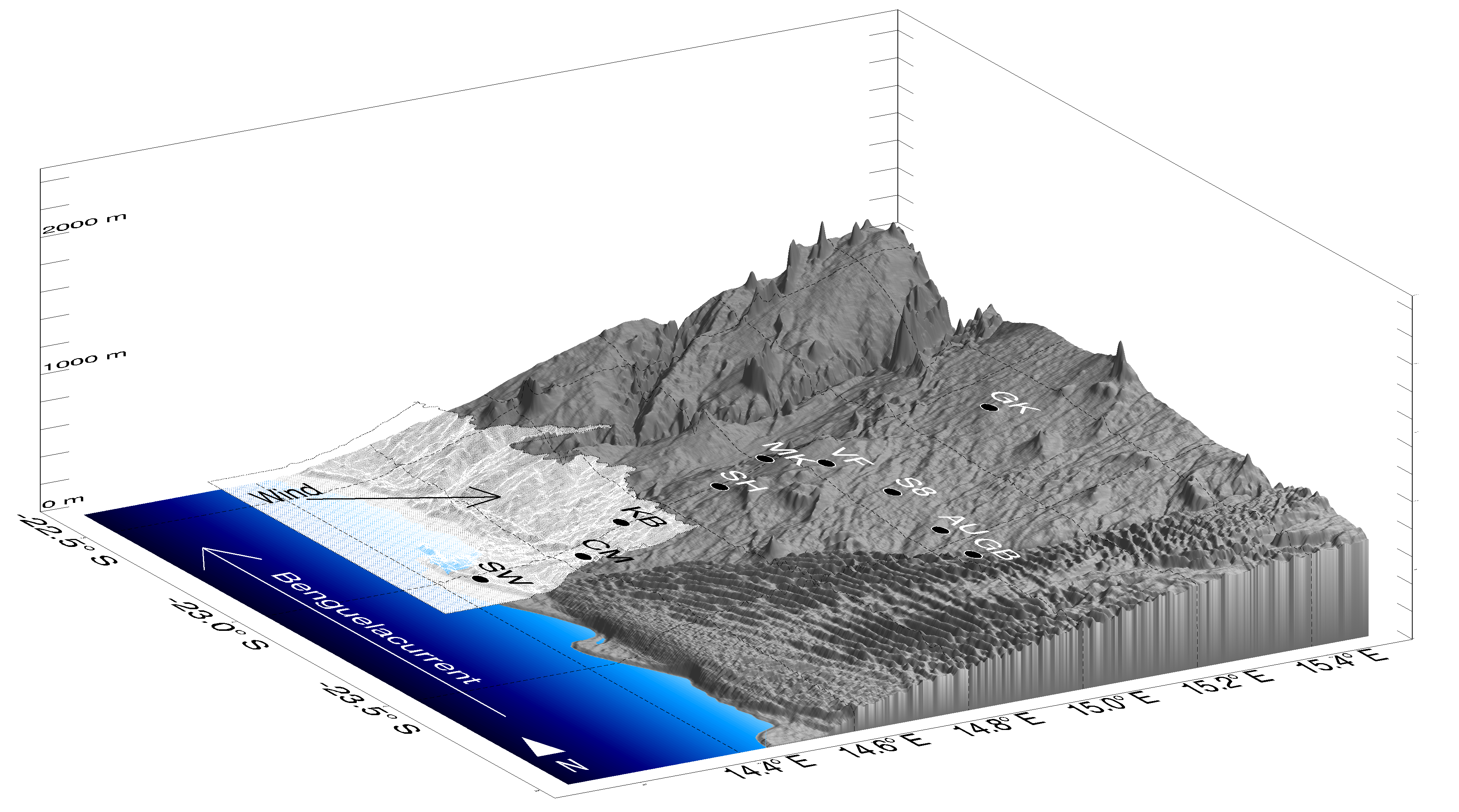Available Fog events since 2016General information about fog videos Send an email to our shared mailbox if you would like to be informed about occuring events 2025 DecemberNovemberOctoberSeptemberAugustJulyMayAprilMarchFebruaryJanuary2024 DecemberNovemberOctoberSeptemberAugustJulyJuneMayAprilMarchFebruaryJanuary2023 DecemberNovemberOctoberSeptemberAugustJulyJuneMayAprilMarchFebruaryJanuary2022 DecemberNovemberOctoberSeptemberAugustJulyJuneMayAprilMarchFebruaryJanuary2021 DecemberNovemberOctoberSeptemberAugustJulyJuneMayAprilMarchFebruaryJanuary2020 DecemberNovemberOctoberSeptemberAugustJulyJuneMayAprilMarchFebruaryJanuary2019 DecemberNovemberOctoberSeptemberAugustJulyJuneMayAprilMarchFebruaryJanuary2018 DecemberNovemberOctoberSeptemberAugustJulyJuneMayAprilMarchFebruaryJanuary2017 DecemberNovemberOctoberSeptemberAugustJulyJuneMayAprilMarchFebruaryJanuary2016 DecemberNovemberOctoberSeptemberAugustJulyJune |
Fog events in Namibia, measured by FogNet stationsCurrent speed: 1 |
|
Currently, MSG pipeline is interrupted and no new videos are being created. Direct linksAs .mp4 RGBDUST Full IOP 2017 As .webm RGBDUST Full IOP 2017 |
Videos just for the IOP viewing pleasure |
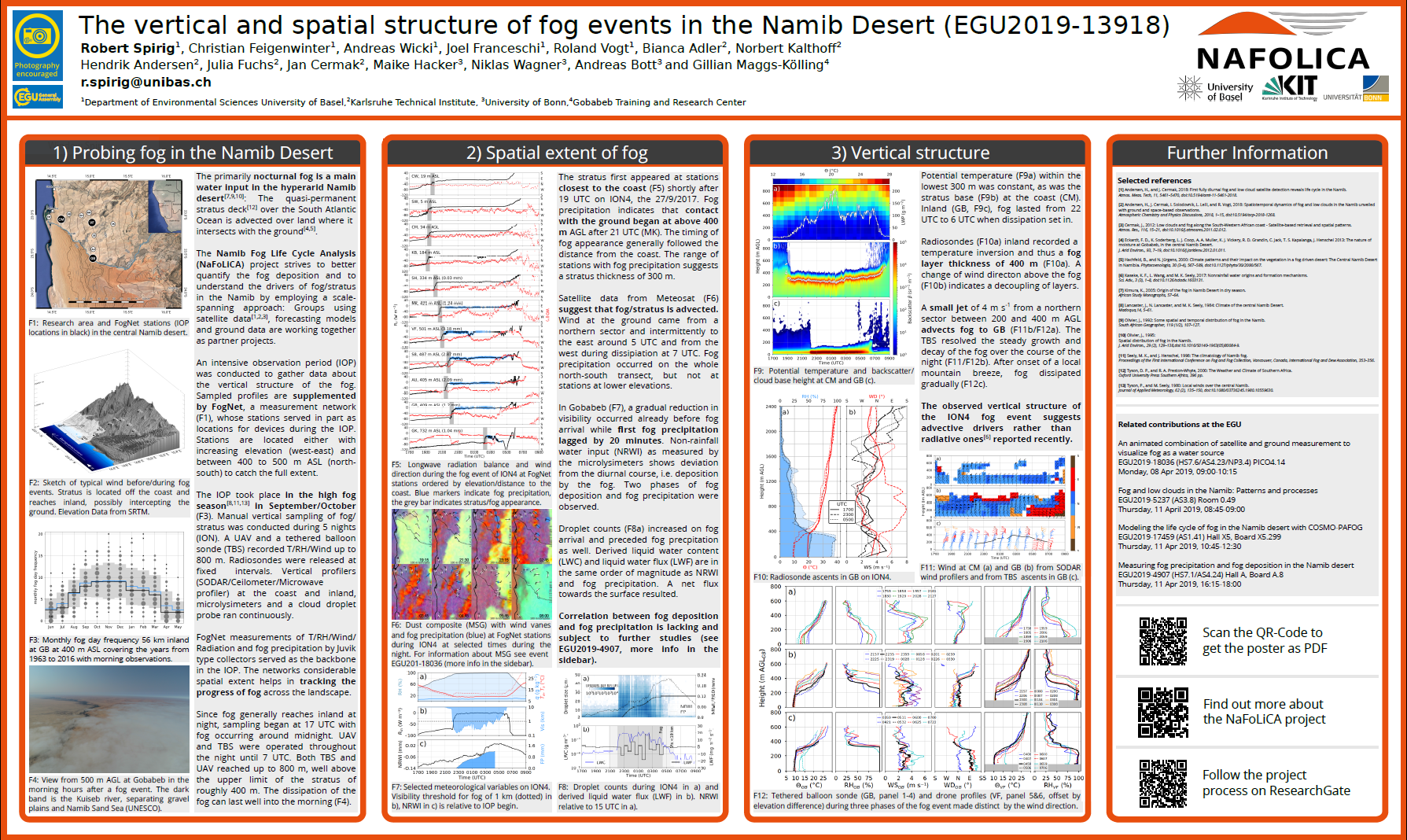
Poster: The vertical and spatial structure of fog The vertical and spatial structure of fog events in the Namib Desert (EGU2019-13918)
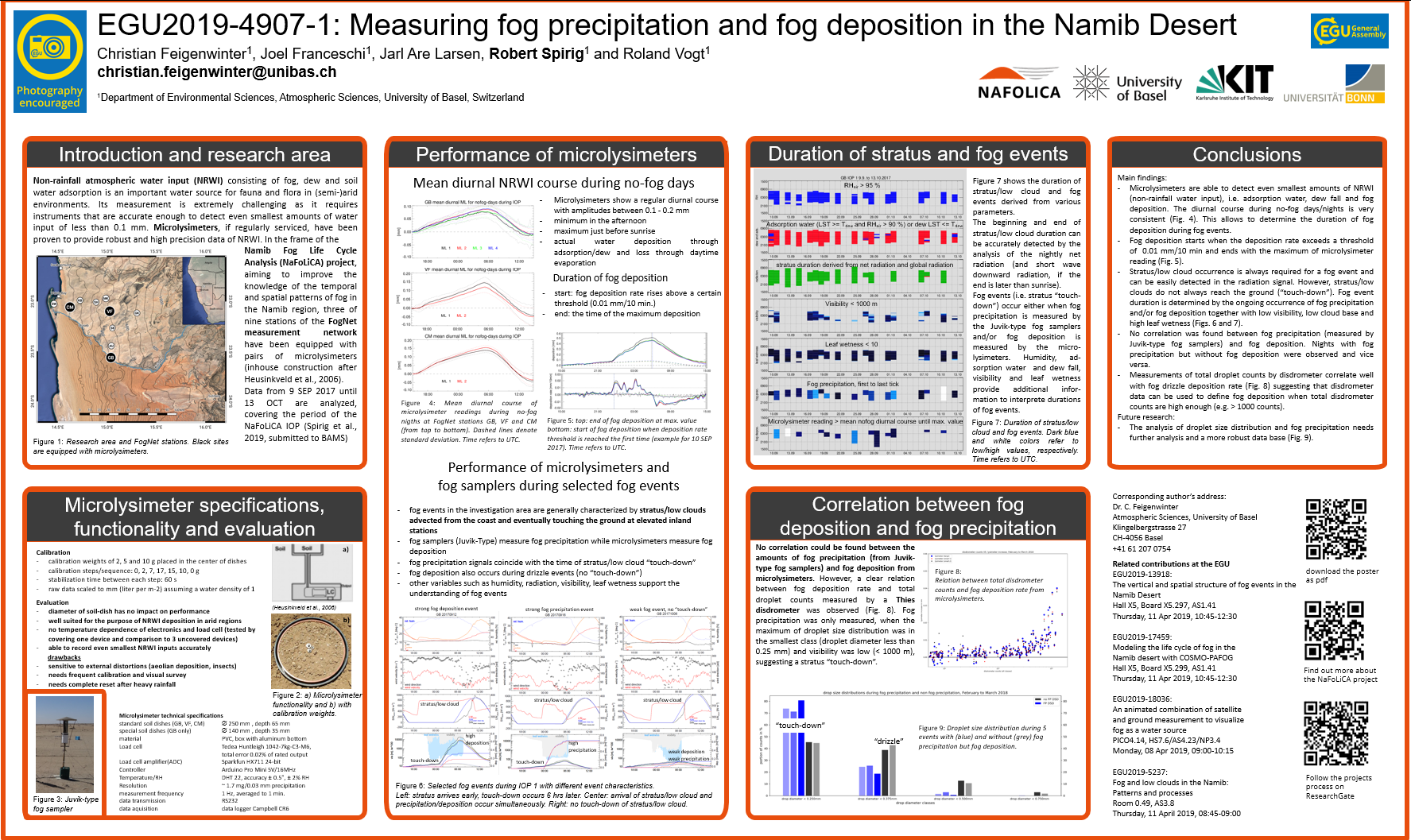
Poster: Measuring fog precipitation and fog deposition in the Namib Desert (EGU2019-4907-1)
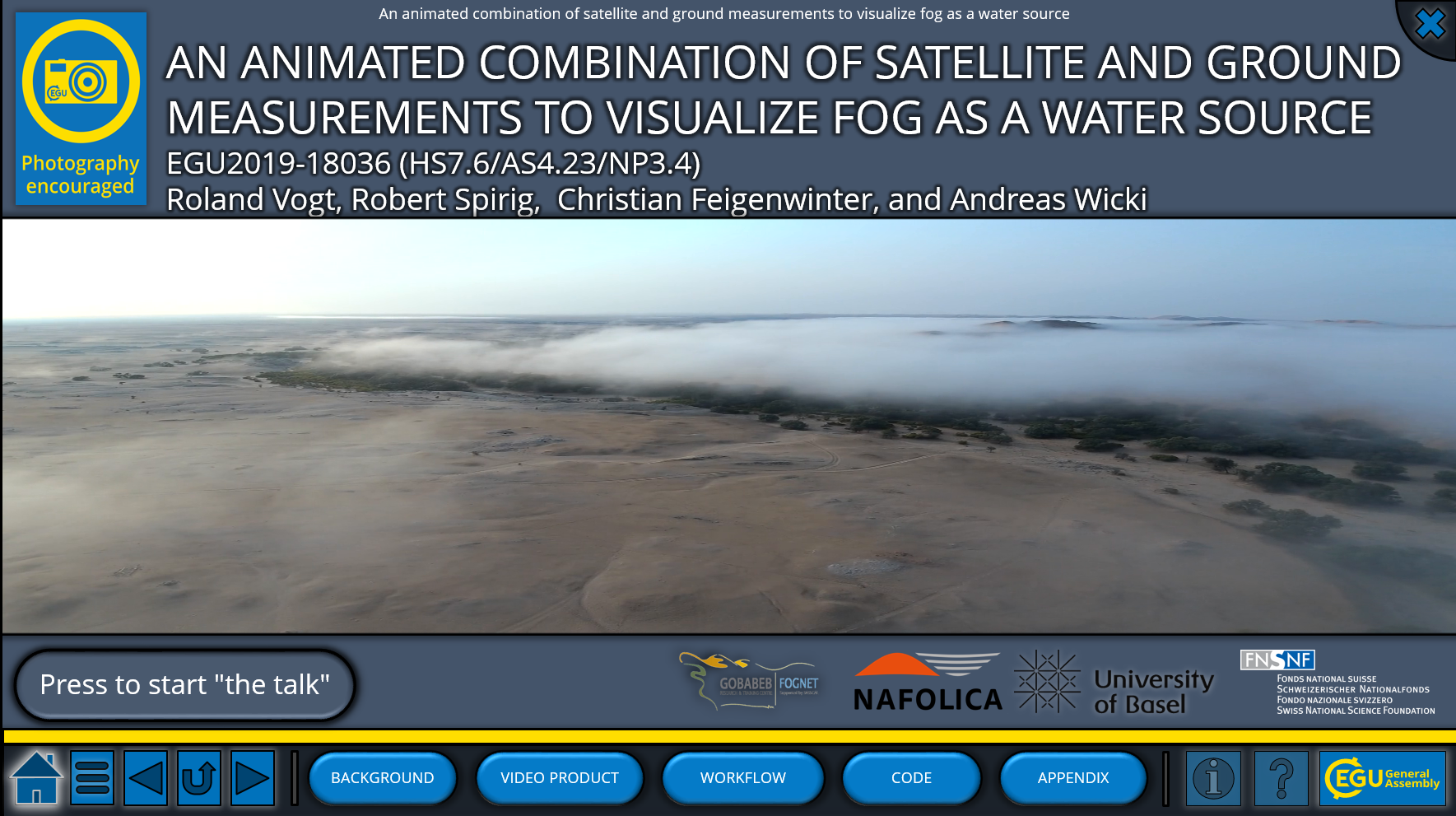
PICO: An animated combination of satellite and ground measurements to visualize fog as a water source (EGU2019-18036)
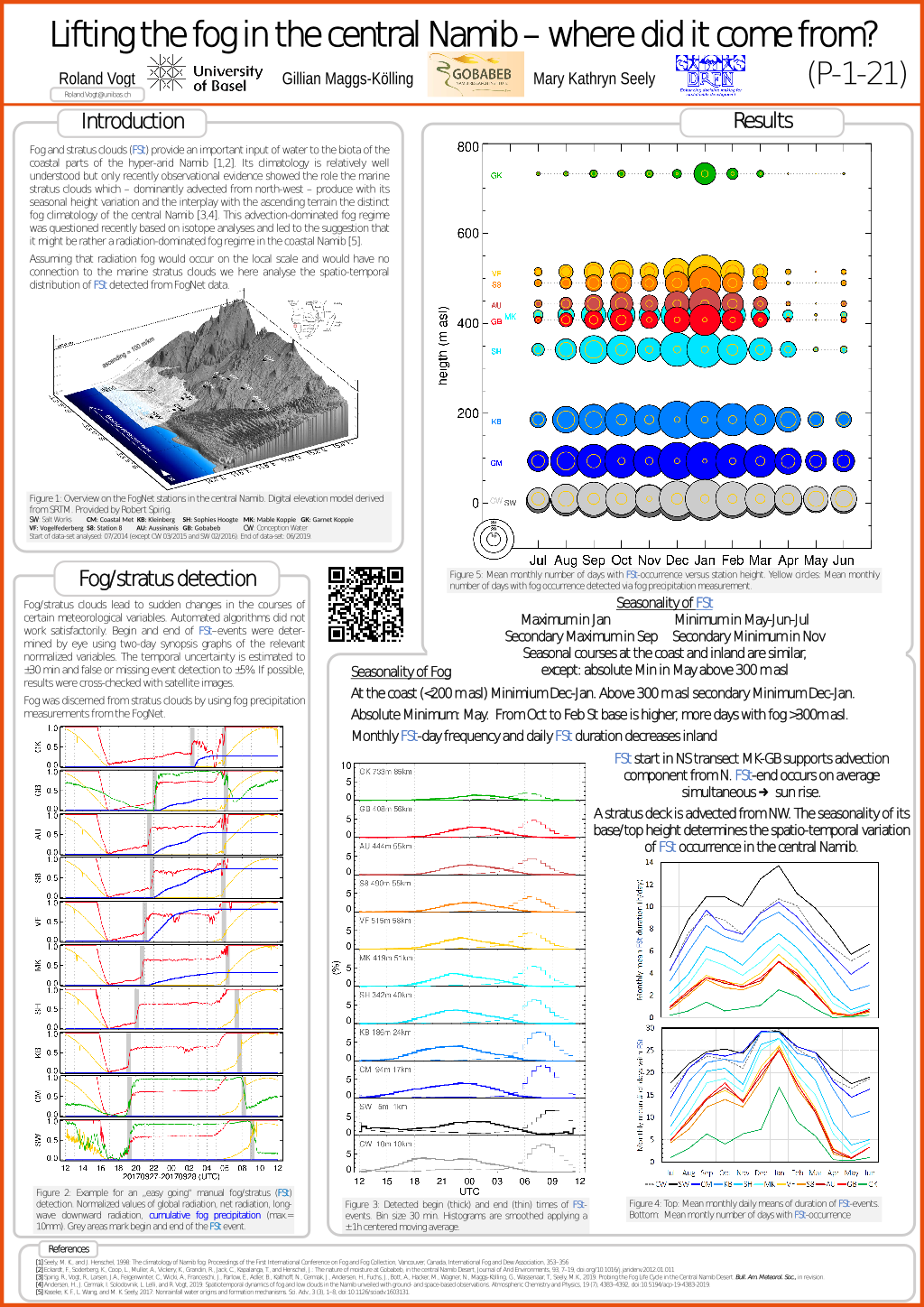
Poster: Lifting the fog in the central Namib – where did it come from?
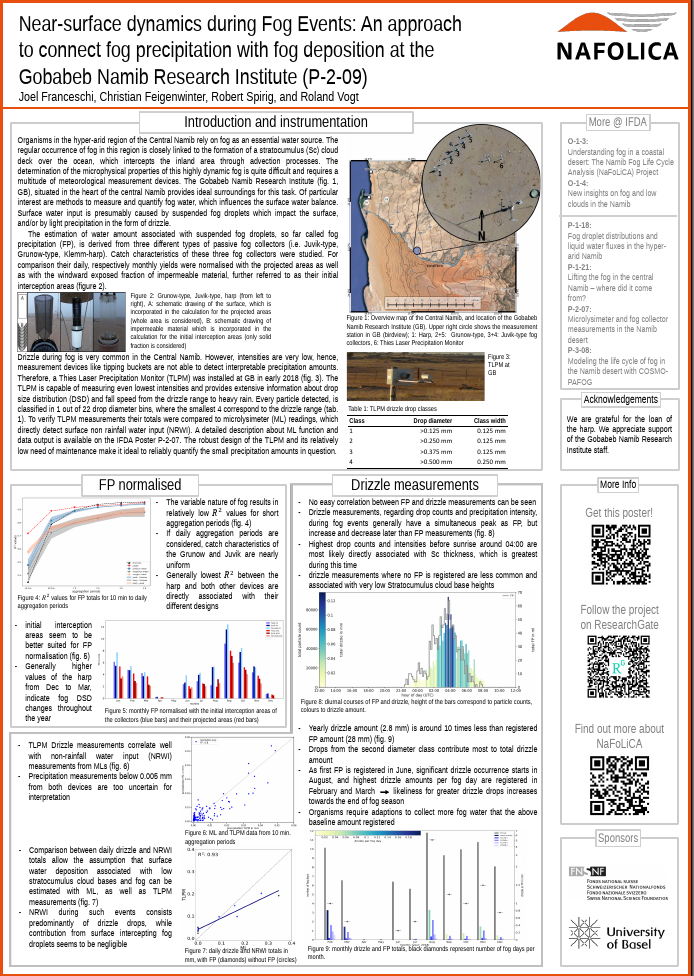
Poster: Near-surface dynamics during Fog Events: An approach to connect fog precipitation with fog deposition at the Gobabeb Namib Research Institute
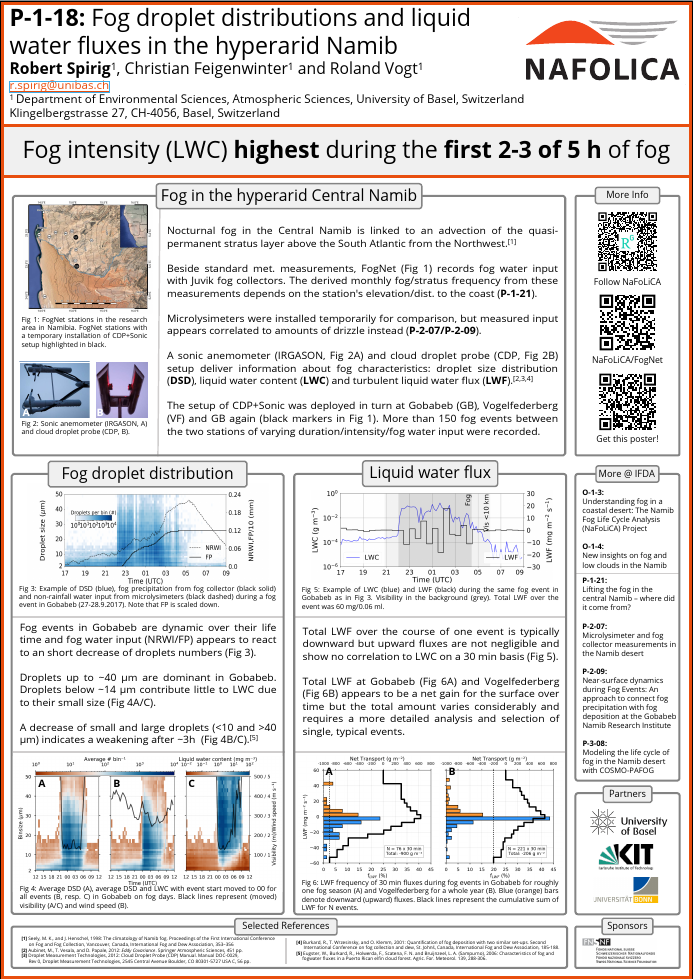
Poster: Fog droplet distributions and liquid water fluxes in the hyperarid Namib
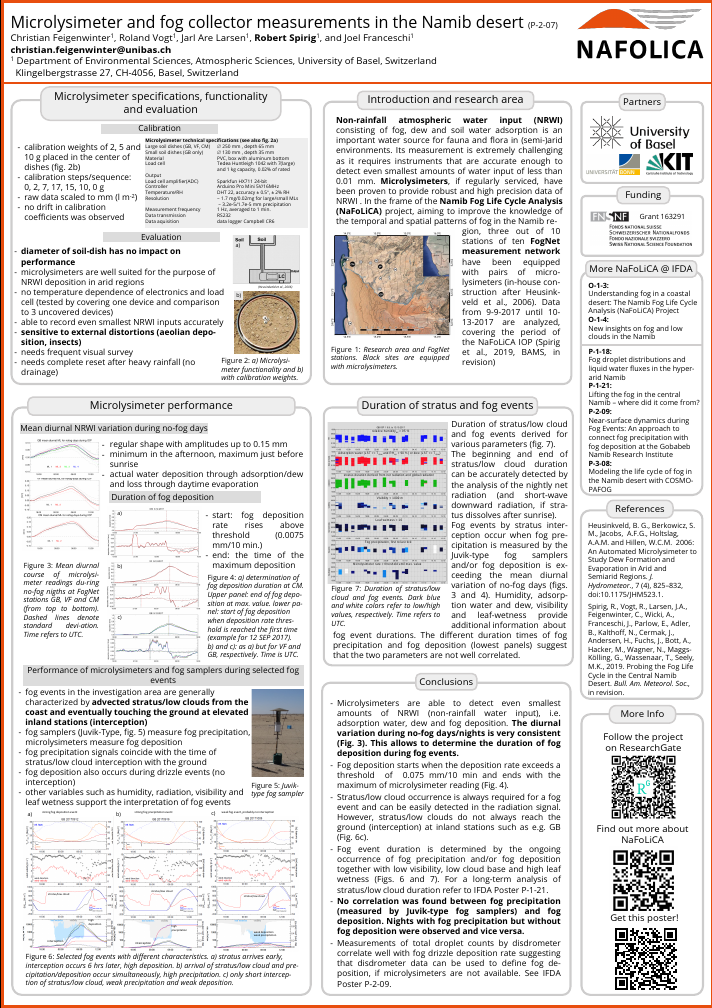
Poster: Microlysimeter and fog collector measurements Robert Spirigin the Namib desert
|
Selected contributions of the NaFoLiCA-F partThe thumbnails on the left give an impression of posters, respectively PICO(s) and, on click, lead to the corresponding material (PDF/PPTX). At the EGU 2019, two posters and one PICO have been presented. At the IFDA 2019, three posters have been presented. Robert Spirig; Roland Vogt; Jarl Are Larsen; Christian Feigenwinter; Andreas Wicki; Joel Franceschi; Eberhard Parlow; Bianca Adler; Norbert Kalthoff; Jan Cermak; Hendrik Andersen; Julia Fuchs; Andreas Bott; Maike Hacker; Niklas Wagner; Gillian Maggs-Kölling; Theo Wassenaar; Mary Seely (2019). Probing the Fog Life Cycles in the Namib DesertBulletin of the American Meteorological Society, 100 (12), 2491-2507. Selected contributions of the NaFoLiCA-S partAndersen, H.; Cermak, J.; Solodovnik, I.; Lelli, L.; Vogt, R. (2019). Spatiotemporal dynamics of fog and low clouds in the Namib unveiled with ground- and space-based observations Atmospheric chemistry and physics, 19 (7), 4383–4392. Andersen, H.; Cermak, J. (2018). First fully diurnal fog and low cloud satellite detection reveals life cycle in the Namib Atmospheric measurement techniques, 11 (10), 5461–5470. |
Available non-fog eventsGeneral information about no fog videos Send an email to our shared mailbox if you would like to be informed about occurring events Currently, MSG pipeline is interrupted and no new videos are being created. 2025 DecemberNovemberOctoberSeptemberAugustJulyJuneMayAprilMarchFebruaryJanuary2024 DecemberNovemberOctoberSeptemberAugustJulyJuneMayAprilMarchFebruaryJanuary2023 DecemberNovemberOctoberSeptemberAugustJulyJuneMayAprilMarchFebruaryJanuary2022 DecemberNovemberOctoberSeptemberAugustJulyJuneMayAprilMarchFebruaryJanuary2021 DecemberNovemberOctoberSeptemberAugustJulyJuneMayAprilMarchFebruaryJanuary2020 DecemberNovemberOctoberSeptemberAugustJulyJuneMay |
Regular, no fog days in NamibiaCurrent speed: 1 |
